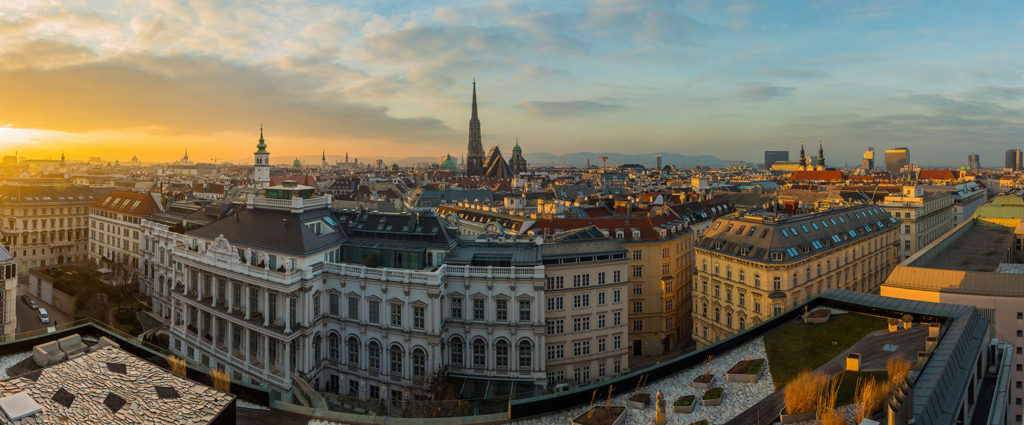
If the goal of travel and vacation is to get away from our everyday lives for a while, eat good food, see new things, and relax, then Vienna, with its schnitzel, Sacher-Torte, Spanish Riding School, and spectacular museums, may be the unsung hero of Europe’s A-List.
Life at an Unhurried Pace
In my other life as a sound designer, I experience the world through sound; I listen to everything. And so it was that on my first day wandering around Vienna, before turning on a microphone or donning my headphones, it struck me completely out of the clear blue sky (literally) that, “This is a really sedate city.” By that I meant that Vienna is not just quiet, but there’s a blissfully unhurried, casual, quiet and respectful vibe about the place.
Coming from Dublin, where the touristy parts of town are flooded with people partying and having a good time, and everything feels busy, noisy, and harried all the time, I find Vienna relaxed and — kind of soft and gentle. Even amidst the traffic and crowds, everything is somehow not very loud or frenetic. Instead, it’s profoundly calm and quiet. It’s delightful, and, more importantly, it’s a quality that makes every other experience quantifiably easier and more enjoyable.
Visitors spend less time and energy overcoming crowds and noise, and rarely suffer input fatigue. Granted, I was there off-season (early February), so your mileage may vary. That said — this feeling, confirmed by other experienced travelers, is something I’d call this a quantifiable element in Vienna. And it makes the Austrian capital a unicorn amongst A-list European destinations.
So, now that you know why to go, let’s discuss where you should plan to visit . . .
Sixteen Wonderful Reasons to Visit Vienna
The Spanish Riding School
It seems weird to plan any part of a vacation around going to watch someone “practice.” But Vienna’s Spanish Riding School, and the opportunity to watch the incomparable Lipizzaner stallions do their thing, is an exception worth making. The “school,” which also offers more traditional performances, regularly opens its morning practice sessions to the public. Attendance is limited, so visitors are encouraged to book tickets (online) early to assure that they get to see these amazing creatures and their highly skilled riders.
I’ll admit that at first our Saturday morning practice session seemed a bit sleepy and ho-hum. It was notably short on high leaps, etc. But as the session progressed, the subtle agility of the horses and the riders’ ability to finesse the horses was astounding. I noticed that they hug the walls of the ring quite a bit, so I asked one of the attendants working the crowd. She told me that they do this to direct their focus. It trains the horse to focus toward the center of the arena when instructed to execute certain commands.
The Riding School divides the practice session into two groups of horses, with a range of skill levels amongst both horses and riders in both groups. This acclimatizes both humans and mounts to a broad range of skills and abilities.
The session was long (an hour or so), but you can take a seat if you want to watch the entire session. Truth be told, unless you’re a serious horse person, half an hour is more than enough to get a sense of these magnificent creatures. There is room for everyone, but if you want one of the better seats along the railing, even with reservations you’ll want to arrive early and be at the front of the considerable queue to get in.
Museums
In Vienna, the quality of the museums is evident not just in the exquisite collections, but as much or more by the splendor of the museum buildings themselves. From the historic grandeur of the Fine Arts Museum to the Albertina Museum’s restrained mix of classic elements and modernism, the architecture of Vienna’s museums is reason enough to explore these palaces of art, history, and culture.
Fine Arts Museum (Kunsthistorisches Museum Wien)
You will find Vienna’s Fine Arts Museum packed with art, crafts, and cultural totems from seemingly every region of the world, particularly the far flung corners of the Habsburg Empire. The building also includes a number of well-curated collections deserving of their own fiefdoms within the larger collection. In particular the Egyptian collection, with its numerous shabti figurines and blue hippo statue from the Middle Kingdom, and room upon room of Greek and Roman antiquities, are worth lingering over.
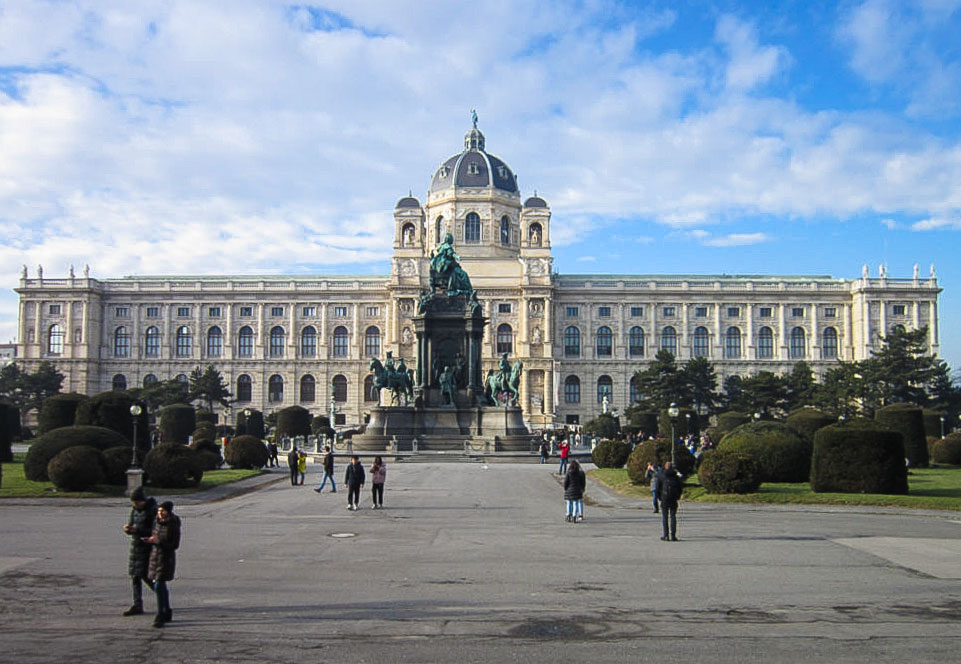
Natural History Museum
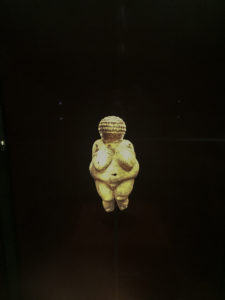
Though the conservationist in me is a bit turned off by natural history museums, the collection in Vienna’s Natural History Museum is quite impressive, and thoughtfully presented. The breadth of the collection is a testament to the Habsburg’s desire to lead the way in science and exploration. For history buffs, reading the museum’s placards gives you a kind of alternative glimpse of the empire’s ebb and flow, with the various collections serving as tangible indicators of the rulers’ scientific, political, and colonial priorities over time.
And, of course, Venus of Willendorf, the museum’s signature exhibit, is, despite its size, rather astounding. It’s also presented in a darkened room that’s beautifully lit, heightens the effect, and offers a sense of reverence to the diminutive figurine.
Museum Quarter
Just behind Maria-Theresien-Platz, the park that separates Vienna’s Natural History Museum and its Fine Arts Museum, sits the Museum Quartier, a collection of galleries, museums, shops and cafes including the Leopold Museum (masterworks of Austrian modern art), the mumok Museum of Modern Art, the Kunthalle Wien showcasing contemporary art, and the Az W Architecture Center of Vienna (Architekturzentrum Wien).

Albertina Museum
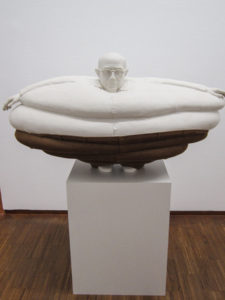
The Albertina Museum sits a few blocks away from the Spanish Riding School, Museum Quartier, and the massive institutional museums around the Maria-Theresien-Platz. But the separation in no way reflects negatively on this museum. With its mix of classical and modern design elements, the Albertina Museum immediately strikes visitors as a different type of museum in Vienna. It eschews the gilded opulence of the Fine Arts and Natural History museums. Instead, the spare modern design elements prepare patrons for the museum’s permanent collection of modern masters such as Chagall, Monet, and Picasso.
The Albertina also takes care to highlight many Austrian modern artists such as Staudacher, Bohatsch, Wurm, and Mikl who might otherwise go unappreciated. Overall, the Albertina, with its mix of modern masters and unsung local heroes as well as a few funky Kafkaesque sculptures, was a delightful change from the stunning but sometimes overwhelming classical architecture of Vienna’s larger museums.
Jewish Museum
Given Austria’s place in World War II, and the travails of Vienna’s Jewish Community, the Jewish Museum of the City of Vienna offers an important and enlightening view of Vienna past and present. With multiple floors of exhibits covering life before, during, and after the war, and focusing fairly evenhandedly on politics, art, religion, and culture, the museum highlights the ongoing struggle of Vienna’s Jewish community to maintain its place in a city that is, in many ways, still coming to grips with itself.
Palaces
For reasons of time, I did not visit any of Vienna’s famous palaces on my trip. But, everyone I know who has visited Vienna’s four palaces says that, for their opulence, gardens, collections, and historical perspective, they are definitely worth a place on every itinerary.
As the main summer residence of the Habsburgs, Schönbrunn Palace and its 1400+ rooms and Baroque styling are a sight to behold. With magnificent gardens, copious sculptures, and Roman ruins, Schönbrunn is one of Austria’s most important landmarks.
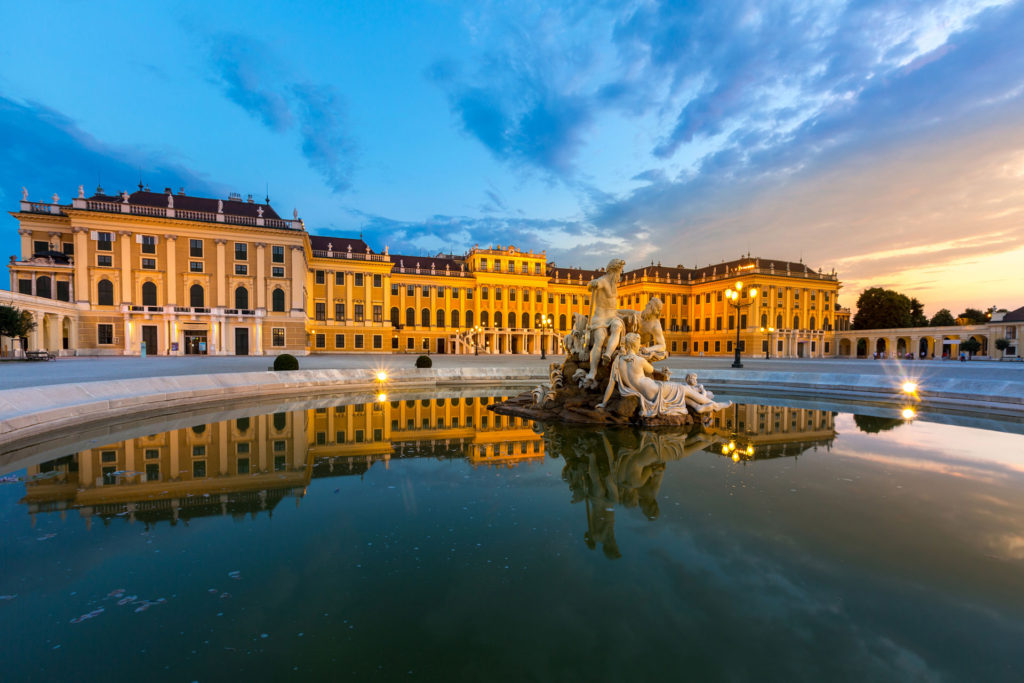
Hofburg Palace, the former primary residence of the Habsburg’s, serves today as the primary residence and office of the Austrian president. Filled with imperial treasures and antiquities, and broken into numerous wings (each dedicated to a different aspect of history or governance), Hofburg is a treasure trove of Viennese, Habsburg, and Austrian art, history, and culture.
The Belvedere palace complex actually consists of two “palaces” (upper and lower) and a number of other buildings. With museums, galleries, outdoor sculptures and gardens, and as the sight of many historical events (treaty negotiations, and countless Habsburg plottings), visitors report that Belvedere has a palpable sense of empire about it.
Oddly enough, Neugebäude Palace is said to be modeled after the tent city occupied by Sultan Suleiman during his 16th Century siege of Vienna. As such, the palace looks nothing like the other Viennese palaces. It’s been out of use since the 17th century, and today stands in ruins, but is under the protection of the government, but is reportedly worth visiting for the sake of curiosity and contrast.
Food in Vienna
As someone with professed “sweet teeth” (why have just one), I admit that I relished the chance to visit the grand Sacher Hotel, the spiritual and historic home of the chocolate cake of all chocolate cakes. But Vienna, with its schnitzel, fried cheese, outdoor markets, cookbook/spice shops, and shop upon shop of desserts proved be a much more complex hive of glutinous excess for a guy who likes to eat as much as I do.
Cafe Culture – Coffee and Cake
One of my more traveled friends has described Vienna as a “smaller, more manageable, Paris.” This certainly extends to the Austrian capital’s cafe culture. In fact, Vienna is known by many as the “coffeehouse capital of the world.”
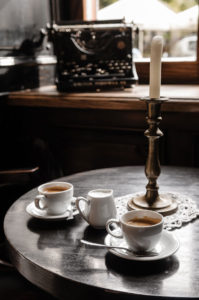
Whether enjoying a restrained Viennese breakfast at the venerable Cafe Landtmann, authentic Sacher-Torte at the landmark hotel, or an Americano and any ol’ pastry at one of the city’s myriad small coffeehouses, taking the time out for coffee, a sweet, and a few moments of contemplation is more than just socially acceptable in Vienna.
I also found that locals and tourists tend to be quite open and friendly here. On several occasions, the conversational impulse spilled over between tables, and I found myself spontaneously chatting with other diners, and found the staff at two establishments willing (and even encouraged by management) to take time to chat with their customers.
While Vienna sports cafes and coffeehouse of all types, many where the vibe is quite relaxed, you will find a Viennese bias towards the cup, saucer, and gold-rimmed end of the spectrum — served with decadent, dark chocolate fondant-clad Sacher-Torte and a restrained dollop of cream on the side.
Sacher-Torte
Determined to scratch the cake-of-all-cakes itch, on my first day in Vienna, I struck out early for the Sacher Hotel. After a bit of sleuthing, I found my way into the Cafe Sacher, which is off to the side of the hotel’s main entrance and restaurant. This is the place to go if you just want coffee and a bit of cake.

After ordering my big frothy, whipped cream-laden Einspänner coffee and a slice of the classic Sacher-Torte, I settled back, enjoyed the velvety ambiance, and started reading the history of the torte.
One day in 1832, when the royal chef de cuisine fell ill, his apprentice, France Sacher, inherited the pressure of pleasing the royal palate. Layering dense chocolate cake with a slathering of apricot jam, and covering the whole affair with something between chocolate fondant and a ganache, the Sacher-Torte was born. Sacher-Torte was an immediate hit in high society. But it wasn’t until Franz’s son Eduard opened the Sacher Hotel with his wife Anna that the cake found its rightful place in culinary history. When Eduard died at 49, Anna took over management of the hotel, and is credited with the international success of Sacher-Torte.
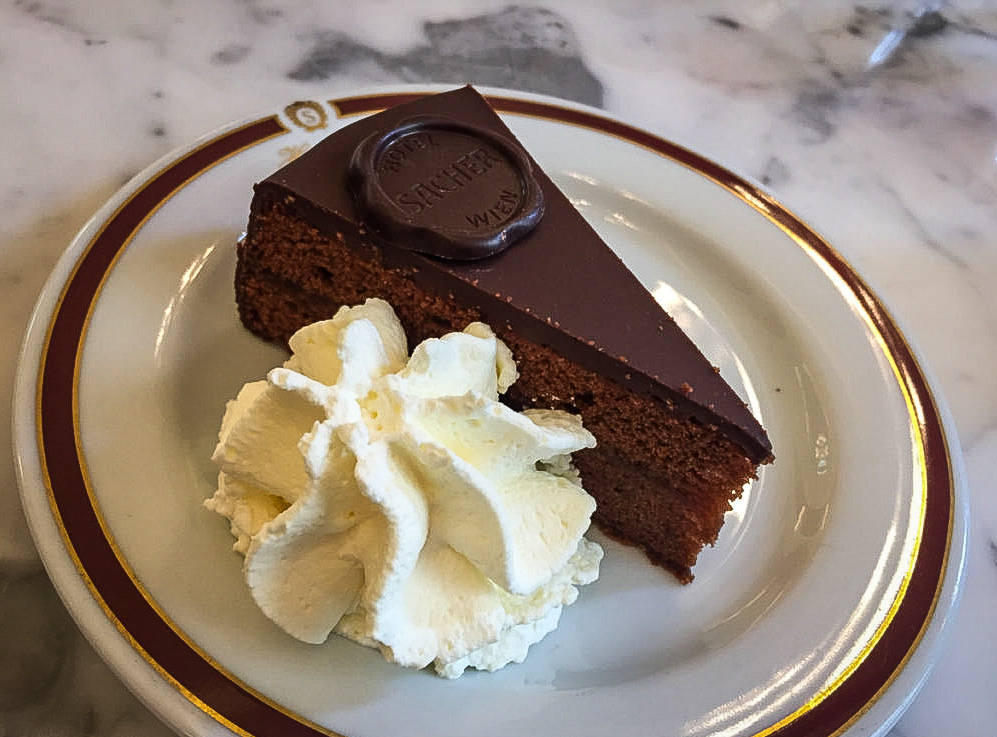
Today, while there are myriad imitations, there is only one original Sacher-Torte, and the Sacher Hotel closely guards the secret recipe. I am always impressed when food involves hand tools. And, as such, I love that the final tasks in the 34-step process of making an authentic Sacher-Torte involve nailing together the wooden box.
I must also say that the perfectly cut, cream-adjacent photogenic slice with the official Sacher seal was every bit as delicious as the hype, and went down dreamily with the Einspänner.
Outdoor Naschmarkt
I often gauge a city, or at least its foodways, by its outdoor markets. In these warrens of produce, meats, artisanal products, and culturally specific tidbits, you often learn what’s important to the locals. That’s why we so looked forward to our trip to the Naschmarkt.
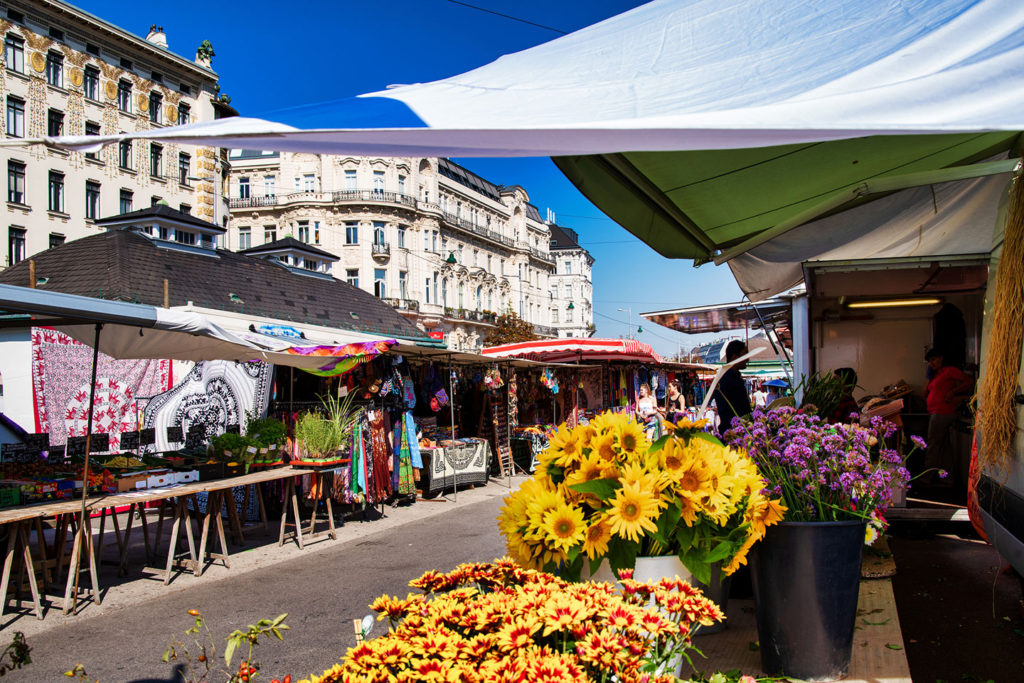
Even though we arrived late in the day, we found the market full of stalls and shops offering nuts, sweets, pastries, gift-quality wines and packaged boxes of local goods, in addition to loads of little cafes with outdoor seating. We dropped into one such cafe, where our waiter offered a custom assemblage of hand-selected meats, cheeses, olives, accompanied by two glasses of very drinkable Austrian wine. The wine and the stunningly arranged tray were a lovely way to get to know the local food culture.
Schnitzel at Figlmüller

While at the market cafe, the couple at the next table suggested we visit Figlmüller to experience the classic Viennese schnitzel. We called immediately and were lucky to book a reservation for the next night.
When we arrived for our reserved time, we found Figlmüller packed to overflowing. We walked past the massive plates of schnitzel and other fried delicacies sprawling on each table, before the host shoehorned us into our own little space.
We shared a hubcap-sized schnitzel, good dark bread, two massive logs of fried Emmentaler, potatoes, and each had a glass of wine. Full to the brim, we both felt a strange sense of satisfaction, and then bafflement at not feeling bloated. The quality of the delicately breaded, slightly lemony pork cutlet (schnitzel) was excellent, and the fried cheese (I’m a bit of a connoisseur) was delightful. Touristy and crowded as it may be, on my next visit to Vienna, I would definitely return to Figlmüller.
Eismarillenknödel at Restaurant Zum Leupold
As if Sacher-Torte and frisbee-sized fried things weren’t enough, my wife and I decided to gild the lily with another Viennese classic. We headed to Zum Leupold for their Eismarillenknödel, gefüllt mit Marillensauce, gerollt in Haselnussbrösel (Ice cream filled with apricot jam, and rolled in hazelnut crumbs). Chocolate cake is nice. But this was something special.
Presented already cut in half, revealing multiple layers of goodness, presentation and anticipation are as much a part of this creation as the taste. Looking a bit like a view of the Earth’s interior in a high school science book, the thin crust of hazelnut surrounds a generous mantle of vanilla ice cream, which protects a core of thick apricot jam.

The whole Eismarillenknödel is so well-chilled that it stays together and refuses to melt while you eat it. This ensures that each mouthful contains the intended distribution of flavors and textures. The flaky hazelnuts dissolve in a cool glissade of ice cream followed by a complex finish of fruity freshness.
Babette’s Spice & Book Shop
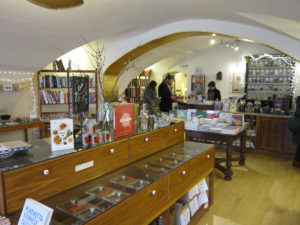
The other way that I judge cities is by their bookstores and specialty food markets. The foodie and reader in me were thrilled to stumble upon Babette’s, a combination bookstore and spice shop.
With two shops in town, I can only vouch for the Am Hof location. But what we found was a delightfully serene space with vaulted ceiling, rough wood beams, and Old World-ish spice display racks, gorgeous antique tables displaying a broad selection of cookbooks, a few chairs for casual browsing/reading, and the tiniest of cafes (just a couple of seats) at the back. The staff were friendly and knowledgeable, and the spice selection quite impressive. Ultimately, we left refreshed and carrying a treatise on grilled flatbreads and a jar or two of this and that.
There & Away
Travelers can easily reach Vienna from most North American hubs. That said, many itineraries involve one or more transfers, so it may be difficult (but not impossible) to find direct flights, and may require a bit longer travel time than other European destinations. It is, however, easily reached by plane and train from other European cities, and, as such, may be a better choice as a mid-trip destination than as either an arrival or departure point. That said, Vienna is definitely worth visiting, and should not be missed.
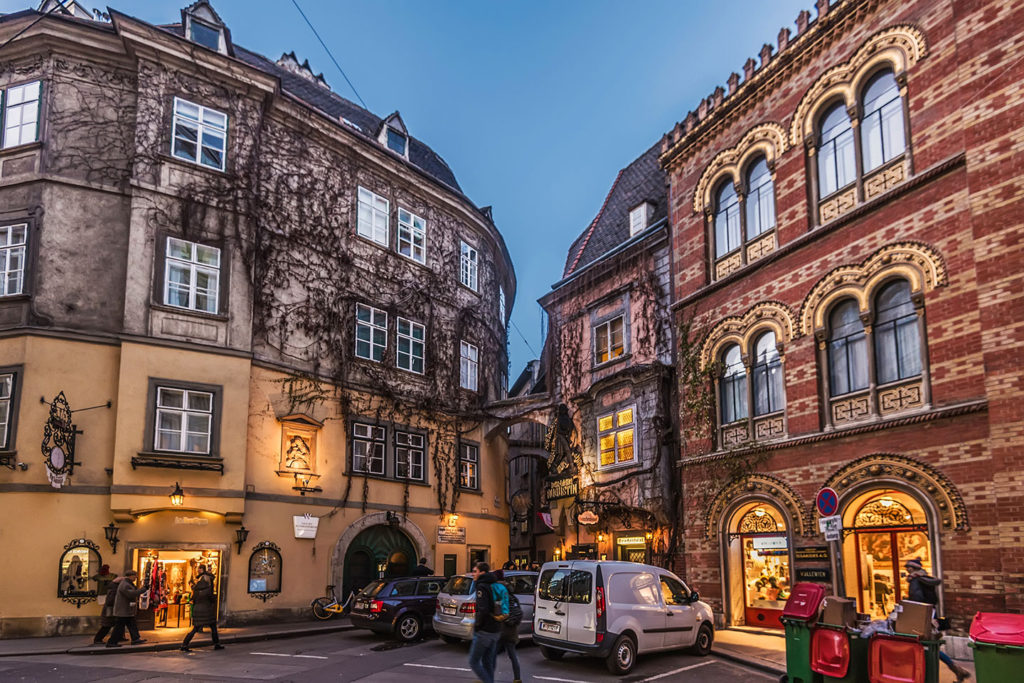
Easy to Get Around (Inexpensive Public Transit)
Public transit is another way that Vienna makes life easier for visitors throughout their stay. Okay, I know this an old trope, and public transit is generally better in Europe than in North America. But, even by European standards, Vienna’s buses, trams, and trains are very functional and inexpensive. Clean, dependable, ubiquitous, affordable public transit is a demonstrable social priority for the Viennese. Heavily subsidized by the government, an annual pass costs just a Euro per day and covers unlimited use on nearly all forms of transport. For shorter stays, a 72-hour pass allowing similar access is just €17.10, and will get you just about everywhere you’d want to go. For stays longer than three days, simply rinse and repeat. Beyond that, taxis are reasonable and easy to hail on the street, or by using Uber and Lyft.
Wrap-up
In the end, Vienna proved be a pleasingly grand yet sedate city that was easy to navigate, and satisfied the mind, the eye, and the palate in equal measure.
Sources:
http://www.leupold.at/leupold.at/Heimseite.html
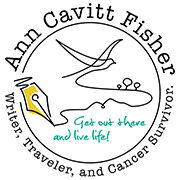
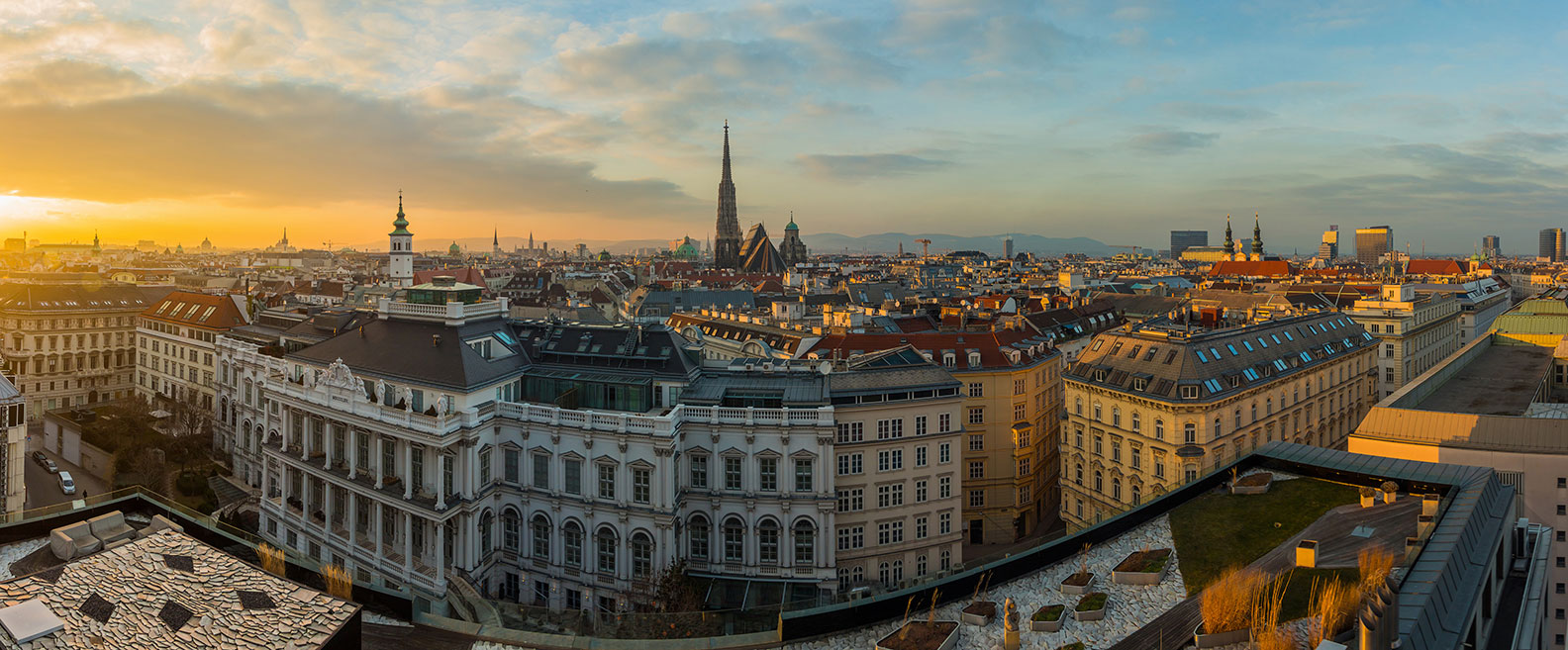
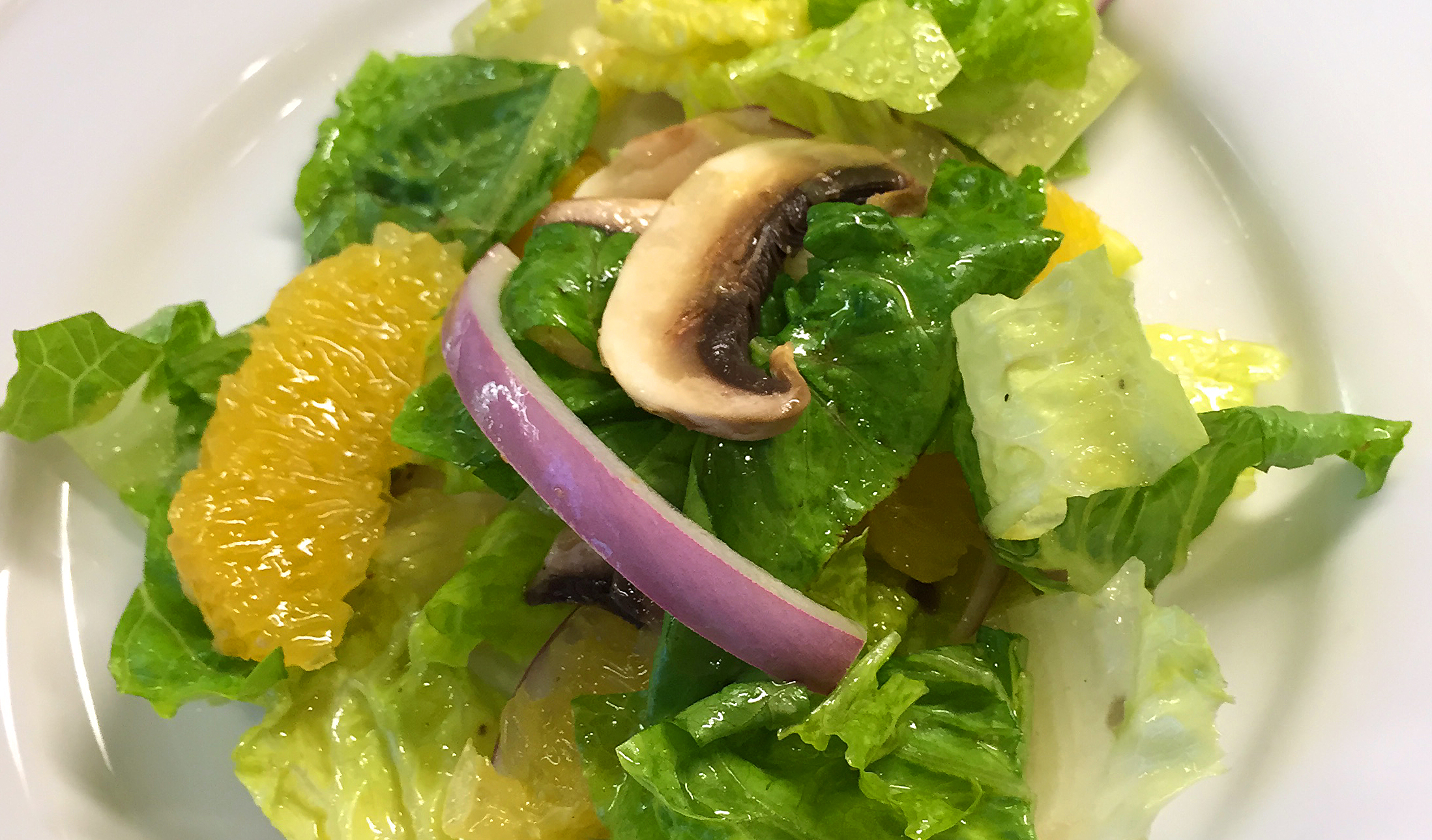


This brought back a lot of great memories from my time studying there.
So glad you liked the story, and it brought back pleasant memories.
Cheers,
GK
beautiful photography and great post!
Also great place to visit in Vienna is The Haus des Meeres, https://www.haus-des-meeres.at/en/Home.htm our children love it 🙂
Huge aquarium built in the anti aircraft tower from WW2.
Thanks for that Peter. I’ll be sure to check it out the next time I’m in town.
I love a good aquarium, and can’t believe I missed out on that one.
Cheers,
GK